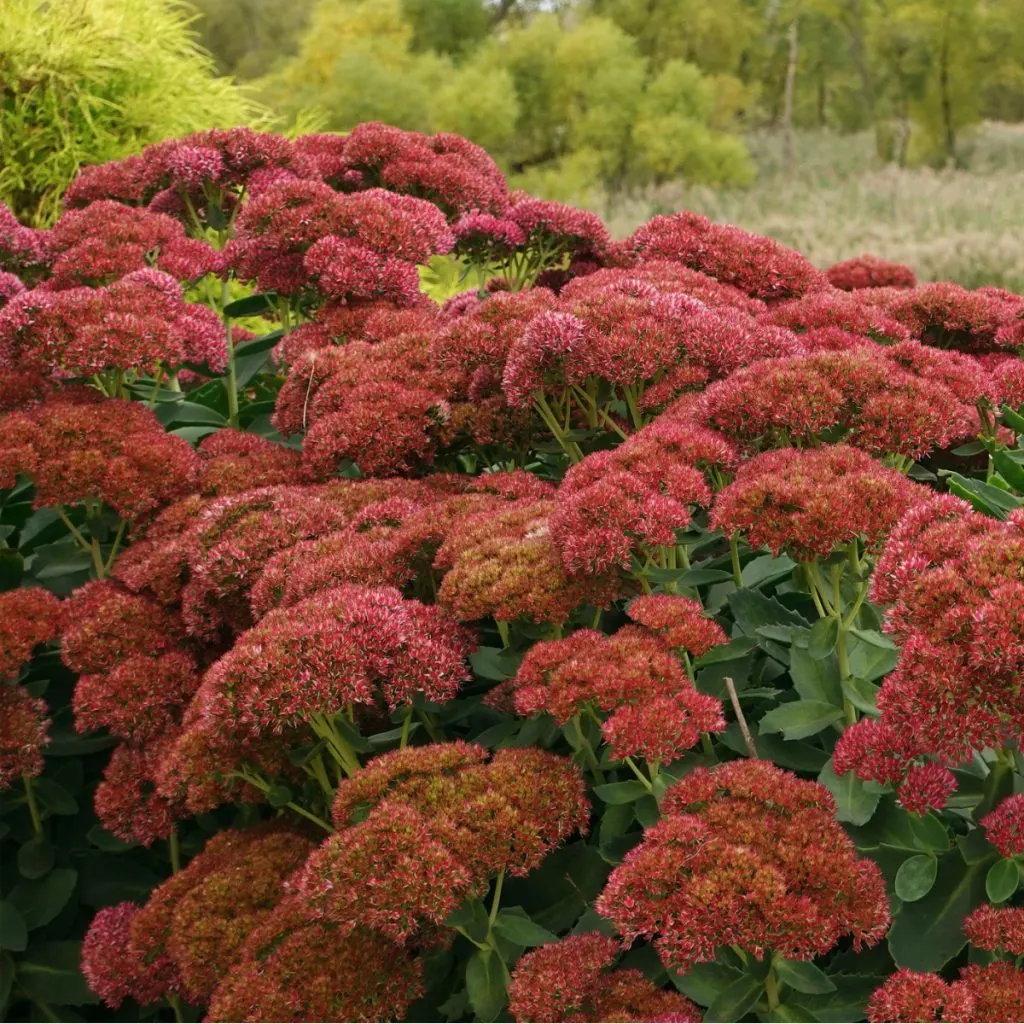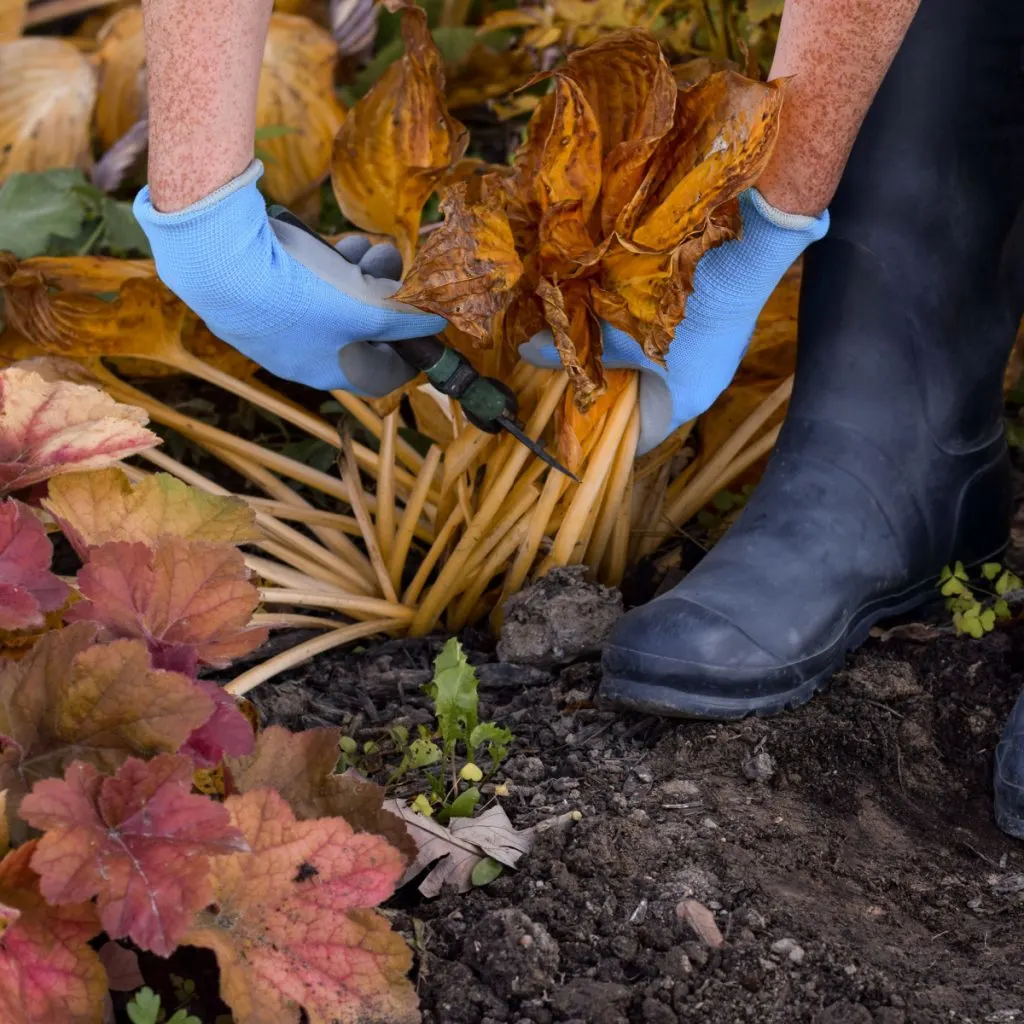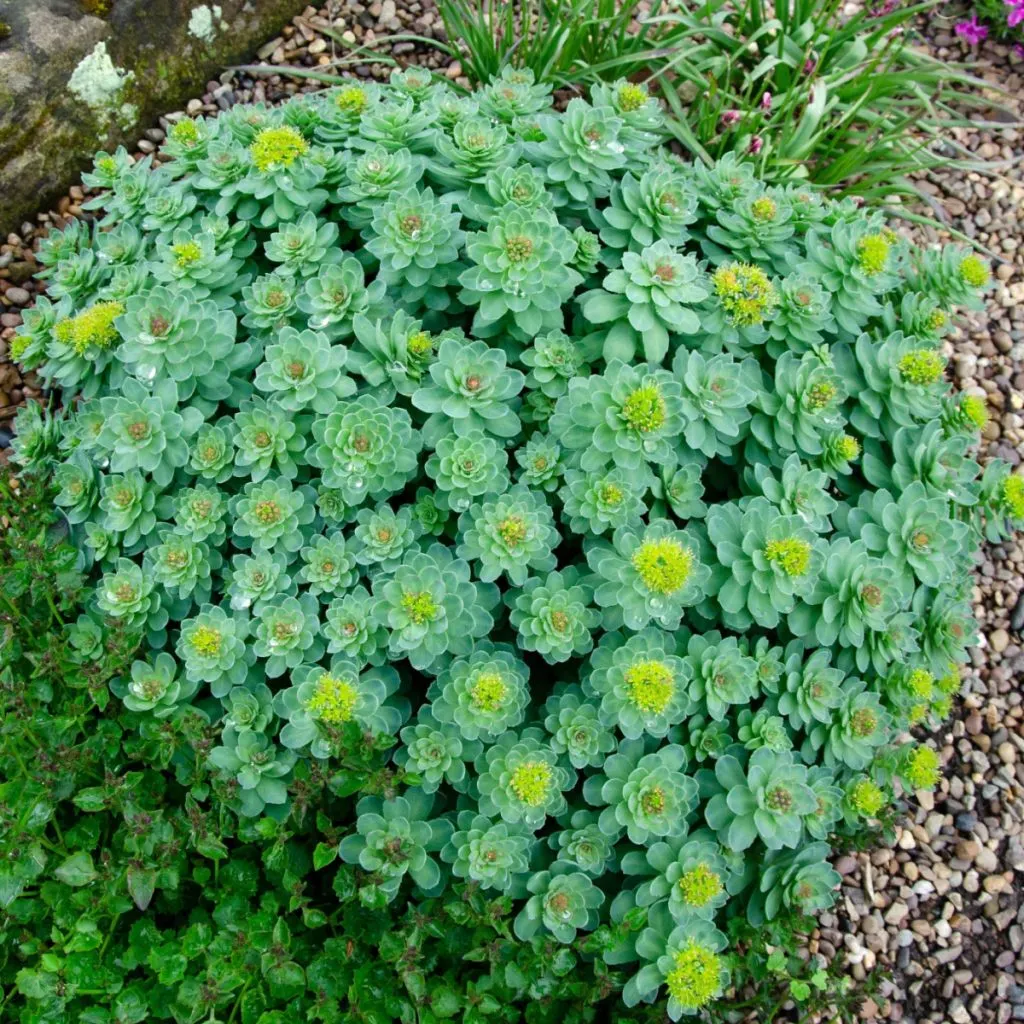Wondering what to do with your sedum plants after they bloom in late fall?
Sedum, which is also commonly called stonecrop, is an extremely hardy and low-maintenance plant that has become more and more popular due to its stunning fall blooms that come alive in the autumn landscape.
Known for its drought tolerance and ability to thrive in less than ideal soil, it really is a powerhouse in flowerbeds. But as fall arrives and its blooms start to fade, gardeners often wonder what to do with the fading blooms. Should they be cut back before winter? Is it okay to divide large plants? And, should they be fertilized since they just finished blooming?

While sedum requires very little maintenance throughout the year, what you do with the plant in the fall after it blooms can have a big impact on its performance next year. In fact, in some cases, it can also play a big factor in whether or not it survives a rough winter.
What To Do With Sedum After It Blooms
As you will see below, although fall is the perfect time for dividing many flowering perennials, it’s not the time to be dividing sedum. But with that said, there are several other chores that you can do that can help it prepare for bigger blooms next year. And the first of those chores centers around whether or not to cut back its fading blooms and foliage before winter arrives!
How Cutting Back Sedum Can Help Your Plant For Next Year – What To Do With Sedum After It Blooms
There are certainly a few pros to leaving sedum up through the winter months. The dried flower heads of sedum add visual interest to the winter garden. Especially when they have a bit of frost or snow on them to highlight the old blooms.
In addition, leaving the plant’s stems and foliage intact can provide a protective layer for the plant base, especially in colder climates.

But when it come right down to it, the better choice for most climates is to cut the plant back before winter arrives. Why? Well, for starters, even though sedum is extremely disease and pest resistant, removing old stems minimizes the risk of fungal infections and pests that often overwinter on the plant as it dies off.
In addition, pruning the plant as it begins to die off also has the added benefit of keeping your flowerbeds far neater through the late fall and winter months. It also has you farther ahead in the spring as there is zero need for maintenance when the plant is cut back in the fall.
But what about leaving the plant up for winter protection? As it turns out, a three to four inch layering of mulch is far better at protecting against the ground and roots constantly thawing and re-freezing around the roots than leaving the old foliage.
Because of this, unless you live in a warm climate with little worry of winter’s fury, it’s far better to cut back sedum in the fall. And luckily, it’s easy to do!

How To Cut Back Sedum – What To Do With Sedum After It Blooms
If you decide to trim your sedum in the fall, wait until the flowers have faded and the plant starts to die back naturally. Use clean, sharp pruning shears to cut the stems down to about 2 inches above the soil.
This method keeps the plant neat while maintaining a low layer that, in addition to a thick layer of mulch, can provide a bit of added insulation. The cuttings are an excellent addition for the compost bin.
Once plants are cut back, finish with a three to four inch layer of fresh mulch over the crown. Shredded hardwood bark, straw, or even shredded leaves are all excellent choices. The key is to mulch as soon as you cut the plant back.
Why Not To Divide Sedum In The Fall – What To Do With Sedum After It Blooms
One task you don’t want to perform on sedum in the fall is dividing it. Dividing perennials helps manage their size, improve their health, and increase the number of plants in your garden. And it is certainly necessary to do from time to time with sedum.
While some perennials benefit from division in the fall (See: 5 Great Perennials To Divide In The Fall – Get More Plants For Free), it’s better to divide sedum in the spring. Dividing in the spring allows the plant to recover from blooming the previous fall.
Spring dividing also sets the stage for it to grow vigorously during the active growing season. The warmer temperatures and increased daylight hours of spring help sedum re-establish its roots more quickly than in the fall.

But even more, sedum, like many succulents, prefers to be divided when it’s coming out of dormancy. This reduces stress and increases the likelihood of successful replanting. Unfortunately, if the roots don’t establish in the fall before winter arrives, a bad winter can take the plant out.
Last but not least, dividing in spring gives sedum plenty of time to still prepare for fall flowering. The plant re-establishes in the spring and builds up energy for setting blooms in early fall.
Watering & Fertilizing – What To Do With Sedum After It Blooms
Much as with dividing in the fall, you also don’t want to fertilize sedum late in the season. Giving power to the plant late in the year can spell big trouble.
First, it will spur late season growth and delay the plant from going into dormancy. And that late season growth is highly susceptible to winter damage. And by delaying dormancy, it can also put it at risk of freezing out over winter as well. Only fertilize sedum in the spring, and do so lightly at that.
As for watering, fall is a time to reduce moisture for sedum as well. Sedum prefers drier conditions. In fact, it is one of the most drought resistant perennials of all. Too much moisture leaves it with a higher chance of root rot. With that in mind, there is little need to water at all.
Here is to taking care of your sedum after it blooms – and before winter arrives. And to having healthier plants, and bigger and better blooms next fall!
Simple Garden Life
Follow Our Facebook Page For Even More Great Tips! Simple Garden Life Facebook Page
Simple Garden Life is a website dedicated to keeping gardening fun, simple and enjoyable! We publish two new articles each week along with a new garden podcast episode every two weeks. This article may contain affiliate links.
